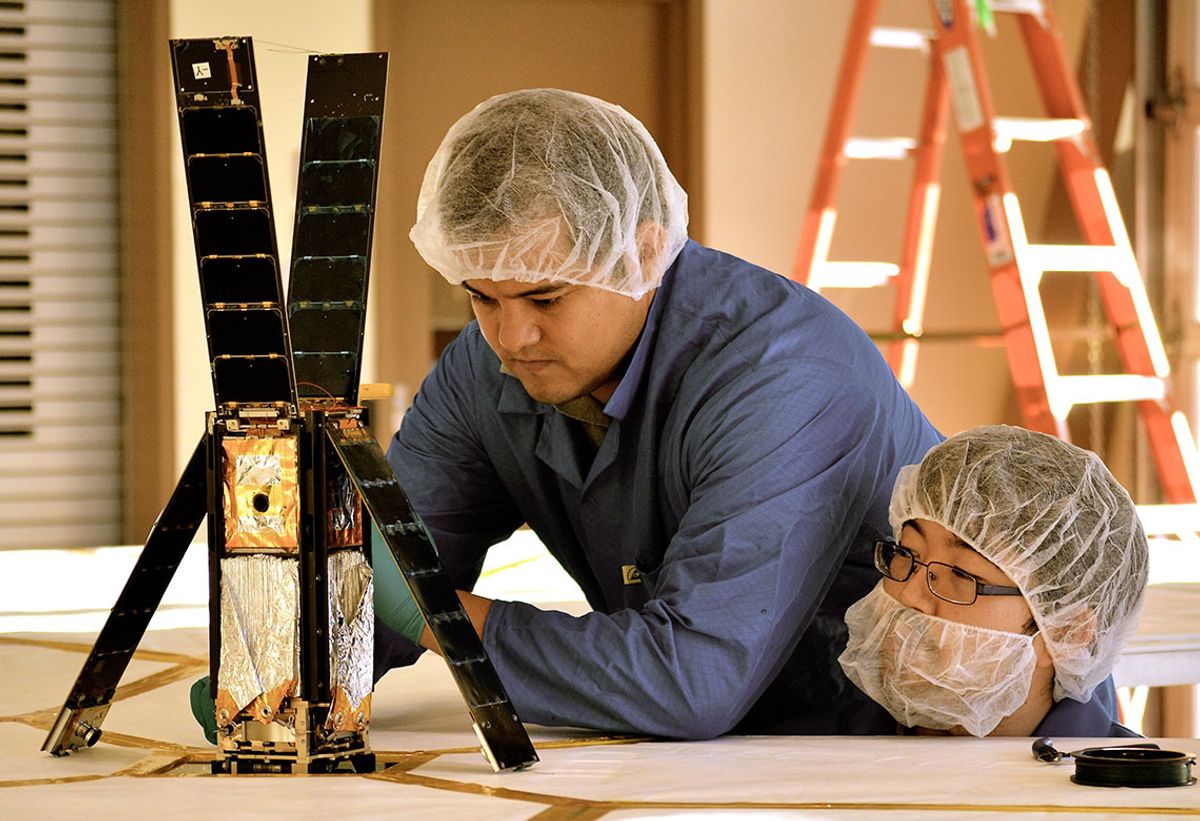In a parallel universe, a NASA-sponsored experimental solar sail—the largest ever built—would be launching into space next month along with the solar wind-monitoring DSCOVR spacecraft. That won’t happen in this universe: NASA cancelled the Sunjammer launch last year due to scheduling concerns, and it’s not clear when, or even if, the sail will get another opportunity to fly.
But there is a bright spot on the near horizon for solar sail tests. The space advocacy organization The Planetary Society today announced that a date has been set for the first flight of its LightSail spacecraft. The 30-centimeter-long CubeSat—an increasingly popular class of small spacecraft—is set to take off from Cape Canaveral Air Force Station in May as a secondary payload on an Atlas V rocket.
Solar sails are propelled by the momentum that photons impart when they bounce off a reflective surface. This method of propulsion can provide slow but steady acceleration to high speeds, which could cut down on the cost and mass of interplanetary missions. With the assistance of a powerful laser beam, the same technique might be used to propel spacecraft to interstellar mission speeds.
Solar sails “will ultimately eventually take a lot of missions a long, long way,” Planetary Society CEO Bill Nye told the New York Times. He said that this spacecraft—and a second one set to launch next year—together cost less than US $4 million to build.
This first LightSail, integrated and tested by the Pasadena, Calif.–based Ecliptic Enterprises, will spend a month or so in orbit before it unfurls Mylar sheets along 4-meter-long booms to create a 32-square-meter sail. The first flight will be a shakedown mission to test sail deployment and other aspects of the spacecraft. But the sailing will have to wait; the spacecraft will be carried to a fairly low orbit where it will experience significant drag from the atmosphere. The second spacecraft, slated to launch in 2016 on a SpaceX Falcon Heavy rocket, will reach a higher orbit where solar pressure can be used to maneuver.
Other spacecraft have used radiation pressure to adjust their orbits, and solar sails have already had a few successful missions. In 2010, the Japan’s space agency JAXA launched a solar sail called IKAROS (short for Interplanetary Kite-craft Accelerated by Radiation Of the Sun) on a mission past Venus. And in 2011, NASA successfully unfurled NanoSail-D, also a compact CubeSat, in low-Earth orbit.
The new Planetary Society mission comes some 10 years after its first solar sail spacecraft, Cosmos 1, fell to Earth after a rocket failure.
The Planetary Society's Jason Davis writes that the team has been sharing data with NASA teams that are working on additional solar-sail-bearing CubeSat missions. The space agency aims to launch at least two such missions (not all payloads have been selected yet) on the maiden voyage of the new heavy-lift Space Launch System, which could happen as early as 2018. One of the spacecraft, Lunar Flashlight, will use its solar sail to maneuver and to reflect light onto the moon's south pole.
Rachel Courtland, an unabashed astronomy aficionado, is a former senior associate editor at Spectrum. She now works in the editorial department at Nature. At Spectrum, she wrote about a variety of engineering efforts, including the quest for energy-producing fusion at the National Ignition Facility and the hunt for dark matter using an ultraquiet radio receiver. In 2014, she received a Neal Award for her feature on shrinking transistors and how the semiconductor industry talks about the challenge.



